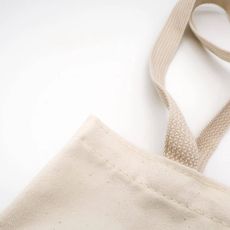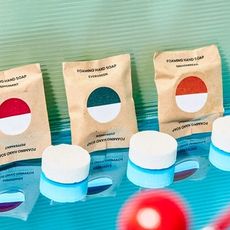How To Stay Eco-Friendly On A Budget

Written by: Lydia Mendel, social @blueland
October 22, 2019
Often when people see “eco-friendly” they think expensive. But eco-friendly products aren’t just trendy water bottles and metal straws, though those are great too. You might already have eco-friendly products lying around at home waiting to be repurposed or it might just take a few simple changes to make your routine more eco. We have five suggestions to help get you started with an eco-friendly routine that is also friendly to your budget: brew at home, shop your home, say no, unplug and get thrifty. These suggestions can help you get started on your eco journey while keeping costs low.
How To Cut Plastic Out Of Your Coffee Routine
Going out for coffee can really add up, both in terms of money and waste. When you get coffee or tea from a café, you usually take the coffee-to-go in a single-use cup. Even paper cups create a considerable amount of waste as the lids are plastic and sometimes the paper cups can be lined with plastic. Brewing coffee at home can eliminate the waste problem and save money. If you use a pod-based coffee maker like a Nespresso or Keurig, there are a few eco-solutions to the pod problem! You can purchase reusable pods online and choose your own coffee. Reusable pods are usually dishwasher safe and eliminate waste from coffee pods. If you use a drip coffee machine, be sure to purchase a reusable coffee filter. Just wash your filter after use and you can use it again to make your next pot, no need for paper filters. Making your coffee at home is an easy solution that can add some money back into your budget and keep plastic out of the landfill. Just grab your favorite mug or a travel cup to take your coffee on the go!
Savings:
Average cost per cup of coffee at a cafe: $2.70
What You Save: You save at minimum $2.35 per cup, but the savings are much higher if you have a latte or other specialty drink, which usually costs around $4.00 per cup
How To Reduce Waste At The Grocery Store
Before going out to buy new items for your home, take a look at what you already have. There are tons of items you can reuse or repurpose to help you save money and save you from producing waste. When you are looking for a container for leftovers, chances are you already have one. Before going out to buy a new container, check your pantry and cupboards for things that can be repurposed. Do you have an empty jar? That is the perfect container for leftovers. Salads, overnight oats and yogurt all fit in glass jars and jars make great cups too.
In need of new cleaning cloths or rags? Old t-shirts are the perfect solution. Instead of throwing out your old clothes, you can reuse them to help keep your home clean. Just cut up your old t-shirts and use them as cleaning cloths without buying anything new. There are a lot of other items in your home that you can repurpose. So, before shopping for new items make sure you check out what you already have.
Savings:
New food storage container: $5.00-$10.00
What You Save: You can save at least $5.00 per container, and likely, even more, depending on the size and material of the container you would otherwise buy.
Package of paper towels: $6.00
What You Save: You can save at least $6.00 by skipping a package of paper towels and choosing to use reusable cloths instead.
How To Cut Down On Your Energy Bill
In an average American household, there are approximately 50 devices using power at any given time. Even devices that are off or asleep still use power when they are plugged in. Sometimes called “vampire appliances”, there are many devices like TVs and kitchen appliances that continue to drain energy even when they are off. This wastes energy and wastes money. You can lower your energy consumption and your utility bill by unplugging chargers and devices when they are not in use. An easy way to make this change? Plugin your devices to a power strip with an on/off switch and turn it off before you leave. This simple change can make a big difference for the environment and your budget.
Savings:
According to MarketWatch, vampire appliances can cost up to ten percent of your annual energy bill. For a typical American household, unplugging vampire appliances could mean saving you as much as $250 a year!
Thrifting To Save Waste
When you’re looking for a furniture or wardrobe update, try thrifting first. The U.S. produces over 15 million tons of textile waste every year. Turning to thrift stores can help reduce that waste. Donating or selling your clothes will keep waste out of landfills and shopping at thrift stores will reduce the overall waste generated. Thrift stores can help you save money as well because the prices are usually much lower than buying new items. Bring your reusable bag with you to shop and you will have a waste-free wardrobe refresh!
Savings:
Thrift stores typically mark down clothes from 50%-80%. That means you could be saving big on your wardrobe upgrades.
Refuse Single-Use Plastic
The easiest way to reduce plastic? Say no. We are constantly offered plastic items that we don’t really need. Free pens, plastic straws, plastic bags, plastic dinnerware that comes with takeout orders and even junk mail. Refusing these items is totally free and can help reduce unnecessary plastic waste.
You can save money and the environment by making a few simple changes and getting creative. It doesn’t have to be expensive to save the planet, so why not give it a try?


